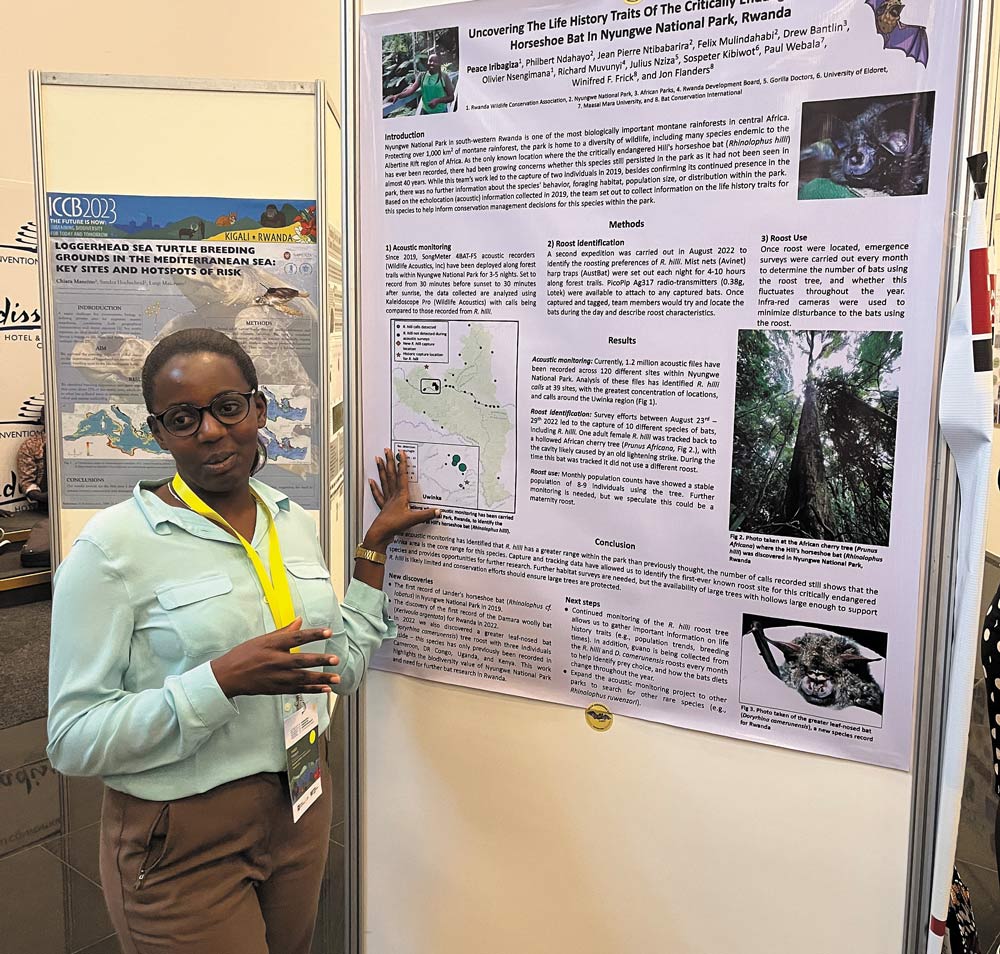fieldnotes

A Rising Star in Rwandan Bat Conservation

When Peace Iribagiza was a small girl growing up in eastern Rwanda, bats would often get into the roofing of local houses. Some frustrated people killed the bats, but Iribagiza’s mother sought a different solution.
Following a neighbor’s advice, she closed off entrance holes while the bats were out foraging and hung foul-smelling plants to discourage them from returning. It worked, and for young Iribagiza, the incident sparked an interest in bats that grew into a passion and, ultimately, a career.
As part of a bachelor’s degree in zoology and conservation, Iribagiza wrote her thesis on the straw-colored fruit bat (Eidolon helvum), a species under threat in Rwanda due to loss of habitat and bat-human conflicts. In 2022, she began working with Bat Conservation International (BCI) and the Rwanda Wildlife Conservation Association (RWCA) in a joint position focusing on bats. Later that year, she had the opportunity to participate in the multinational expedition in Nyungwe National Park, during which scientists from RWCA, BCI, and partner organizations successfully identified the roost site of the Critically Endangered Hill’s horseshoe bat (Rhinolophus hilli), as well as that of another rare bat species, the greater leaf-nosed bat (Doryrhina camerunensis).
“Acoustic monitoring was one of the powerful tools that helped us find the roost of the Hill’s horseshoe bat,” Iribagiza says. After the expedition team downloaded the calls, Iribagiza analyzed them following training from fellow expedition member Jon Flanders, Ph.D., BCI’s Director of Endangered Species Interventions. Iribagiza has continued to monitor the Hill’s horseshoe and greater leaf-nosed bat roosts and analyze seasonal dietary patterns by studying guano samples.
Acoustic monitoring and conservation in Rwanda
—Peace Iribagiza
The greatest challenge in her work, Iribagiza says, is people’s negative beliefs about bats and lack of awareness of their crucial ecosystem roles. “One of my goals is to raise awareness on the national level,” she explains.
Iribagiza hopes to become widely known as an expert on her country’s bat species. “If they say, ‘bats of Rwanda,’ someone hears ‘Peace’,’’ she says with a laugh. With her passion and ever-expanding research skills and knowledge base, it’s surely only a matter of time before the name Peace Iribagiza becomes synonymous with bat conservation in Rwanda.